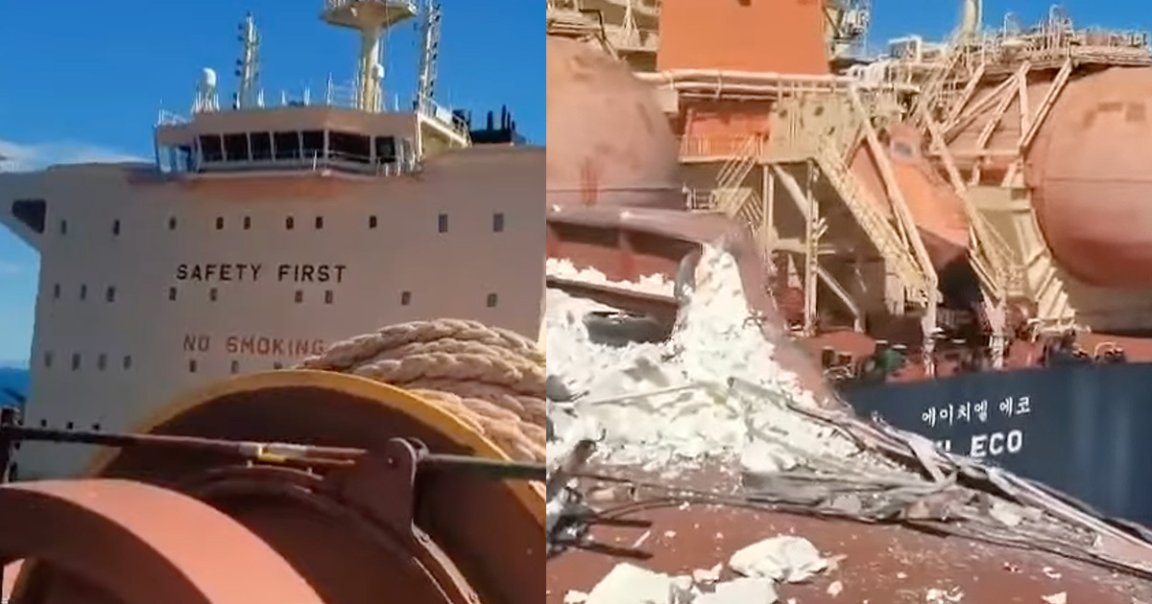
That Looked Expensive
Two enormous bulk carrier ships collided into each other this month, shredding heavy metal into ribbons as ominous reverberations cannoned through both vessels. Neither sunk, but appeared to sustain considerable damage, maritime publication TradeWinds reports.
The excruciating collision between the two ships took place on July 16 at a port in Hay Point in Queensland, Australia. And a recently-uploaded video of the incident taken aboard the YM Serenity, a Japanese-operated capesize carrier that was at anchor when it was struck, shows the equally enormous capesized HL Eco, whose operator is based in South Korea, threateningly drifting towards the YM Serenity’s bow.
Bravely, the cameraman rushes to the top of the bow’s forecastle right as the first blow is struck, giving us the incredibly ironic sight of a giant “SAFETY FIRST” sign on the bridge of the incoming ship as its portside plows even deeper into the YM Serenity’s hull with violent shudders.
The worst of the damage takes place seconds later, when two of the HL Eco’s liquid nitrogen gas tanks, jutting out from the side of the vessel’s bridge, are gouged open on the lip of the Serenity’s bow, spilling what appears to be insulation material, according to TradeWinds.
But the HL Eco, in all its mighty momentum, seems to shrug this off, snatches the YM Serenity’s starboard anchor for good measure, and marches onward, leaving the anchored crew scrambling to clean up the mess.
Averting Disaster
The sheer scale of the megalophobia-inducing incident is something to behold. From the initial distance of the cameraman, the towering upright hull of the Eco gives the illusion of a moving wall bisecting the seas.
But more details about the collision are scant. According to TradeWinds, the HL Eco reportedly lost power in its main engine as it was trying to anchor at Hay Point, losing control before it eventually crossed paths with the YM Serenity.
The sheer mass of these vessels — both have deadweight tonnages of over 180,000 tons, which doesn’t even factor the weight of the ship itself — means that changing their direction, let alone stopping them, is incredibly difficult.
We saw something similar happen earlier this year, when another huge carrier, the MV Dali, destroyed the Francis Scott Key Bridge after losing power, resulting in the deaths of at least six bridge workers.
Fortunately, no deaths or injuries have been reported in this latest collision. But as TradeWinds notes, it does raise a few questions about the placement of the fuel tanks we saw get eviscerated in the video. Had its contents spilled onto the hulls of the vessels as metal scraped on metal, we could have been witnessing something far more disastrous.
More on ships: Ingenious Trick Cuts Cargo Ship Carbon Emissions by 17 Percent